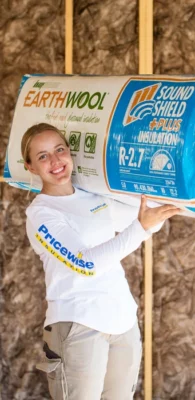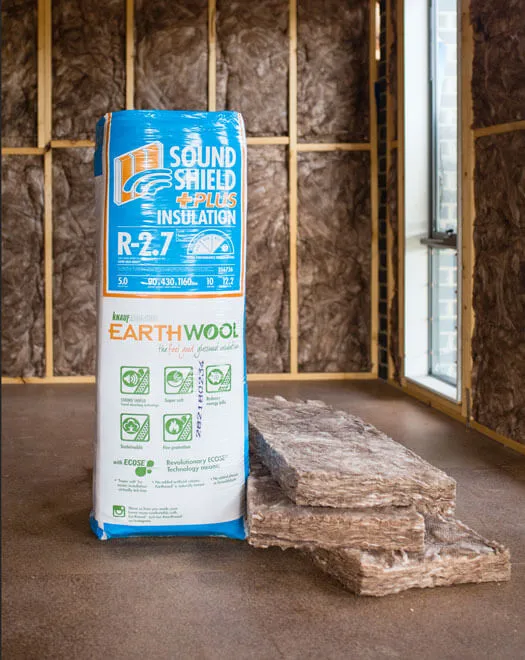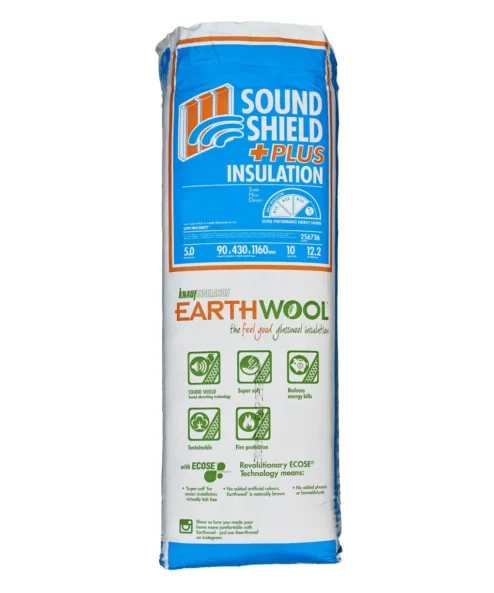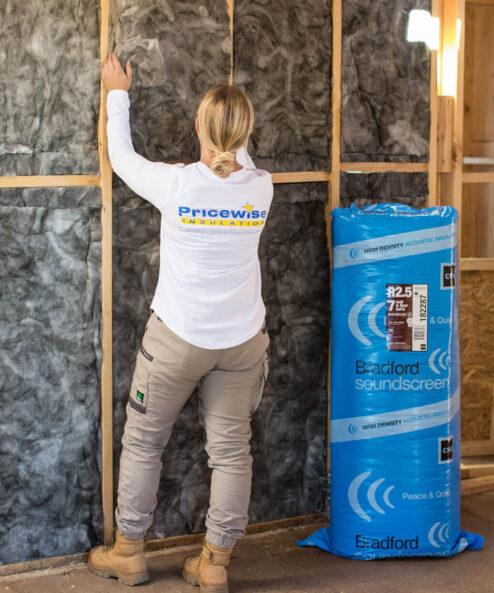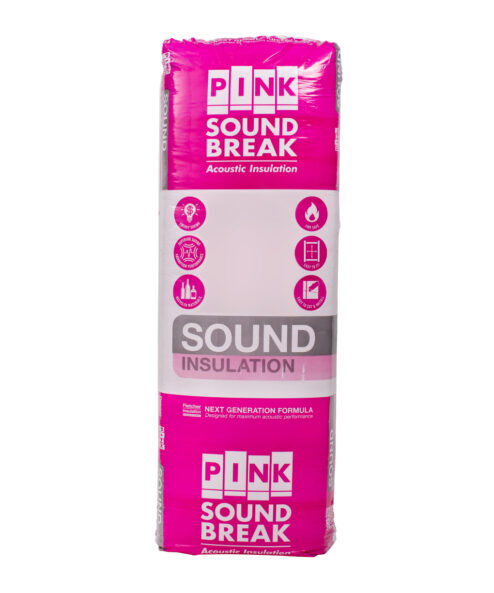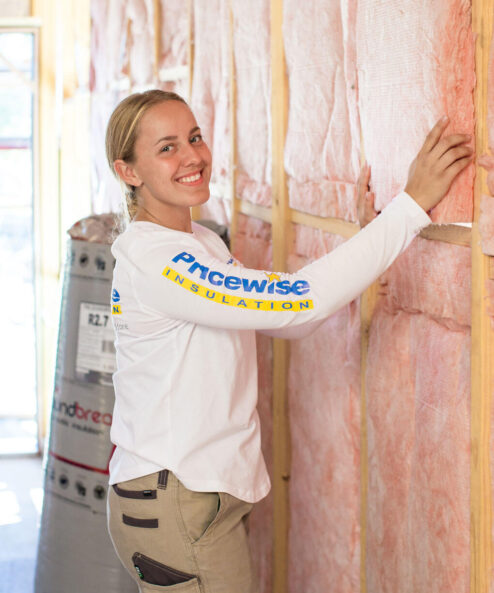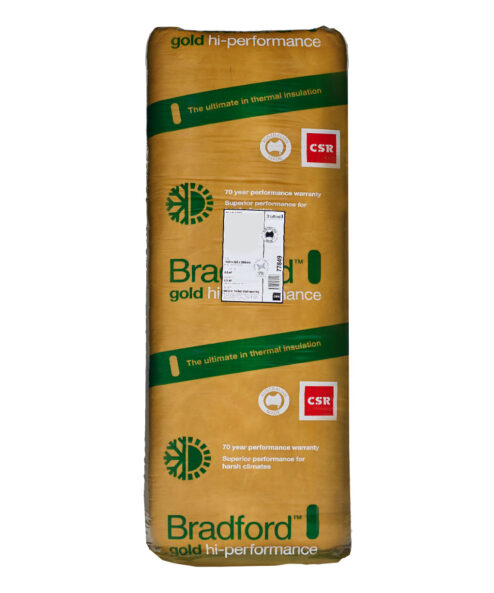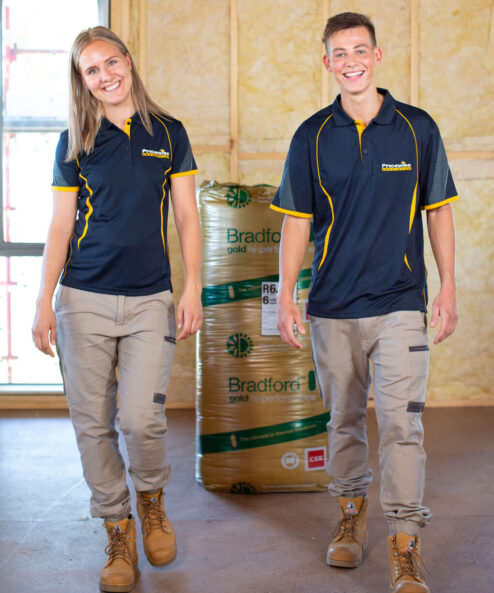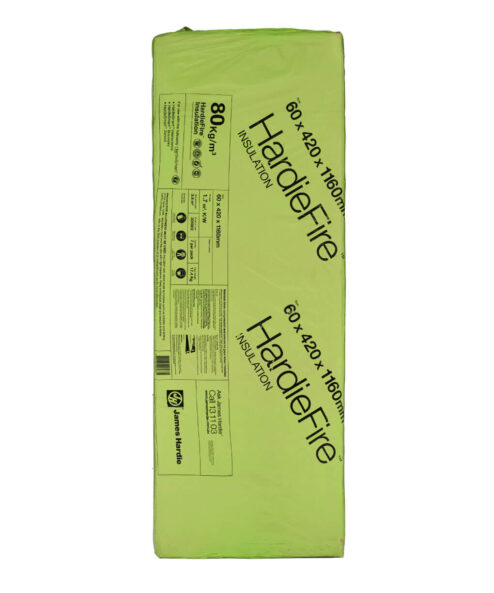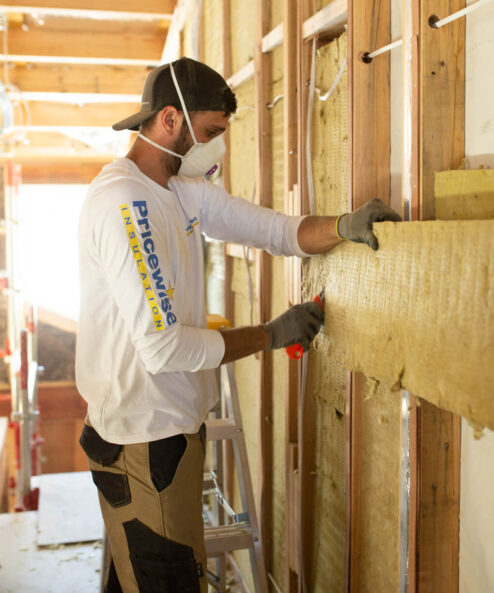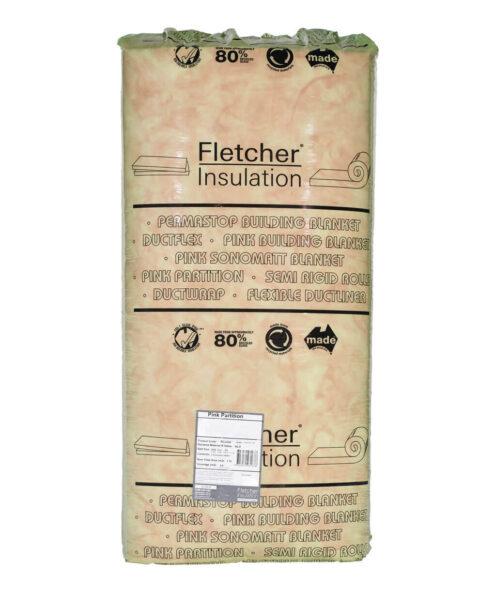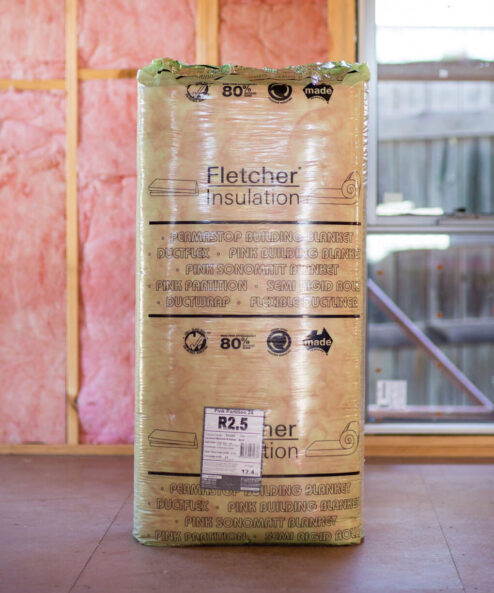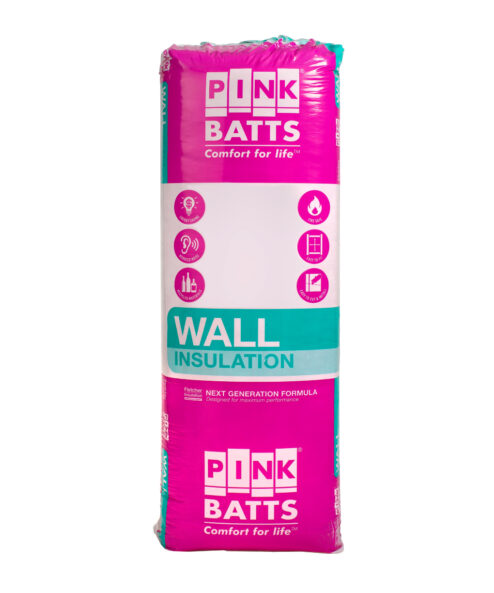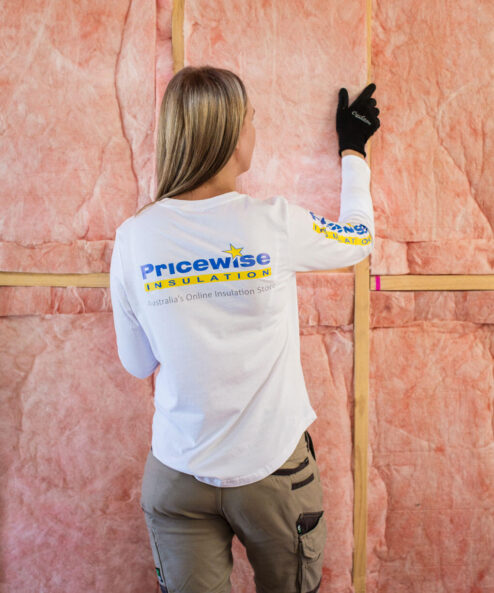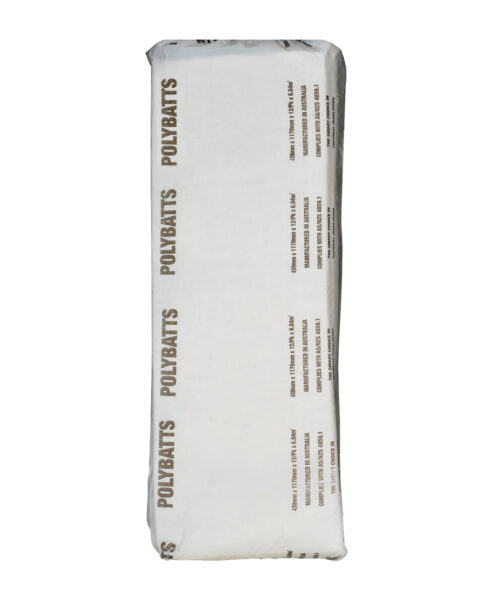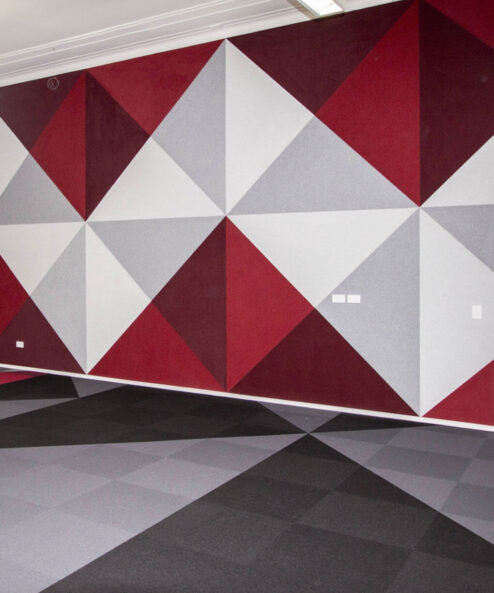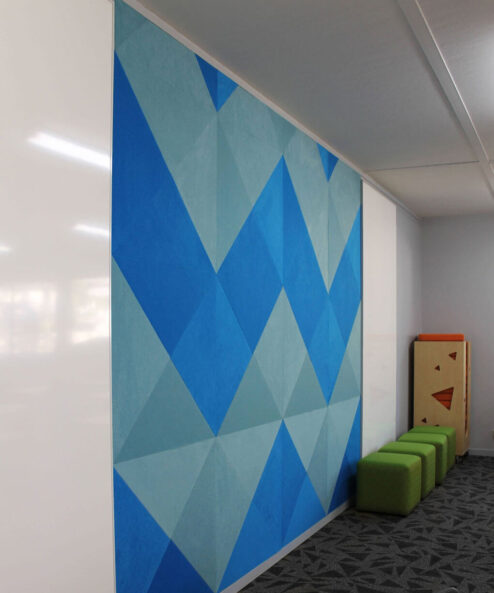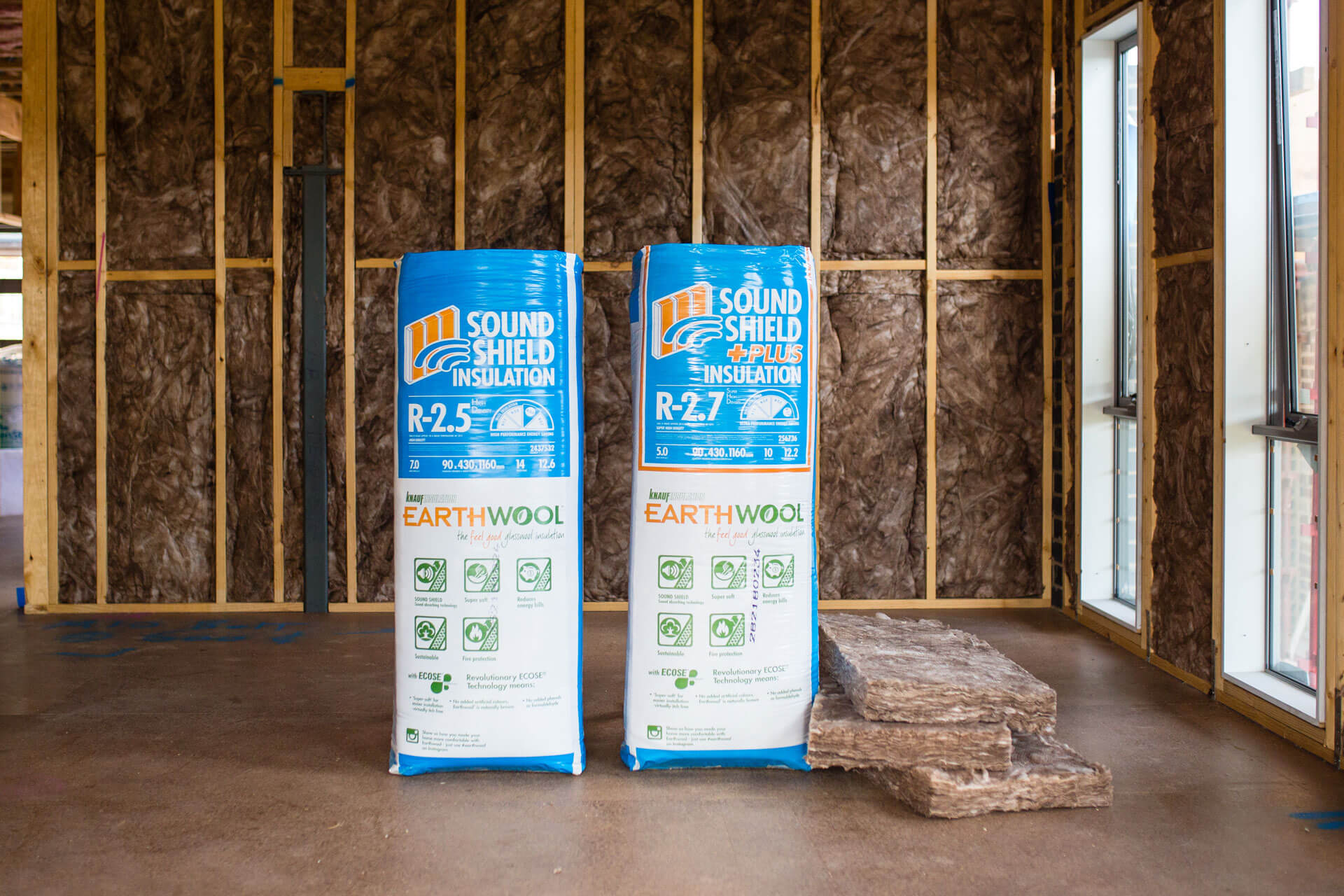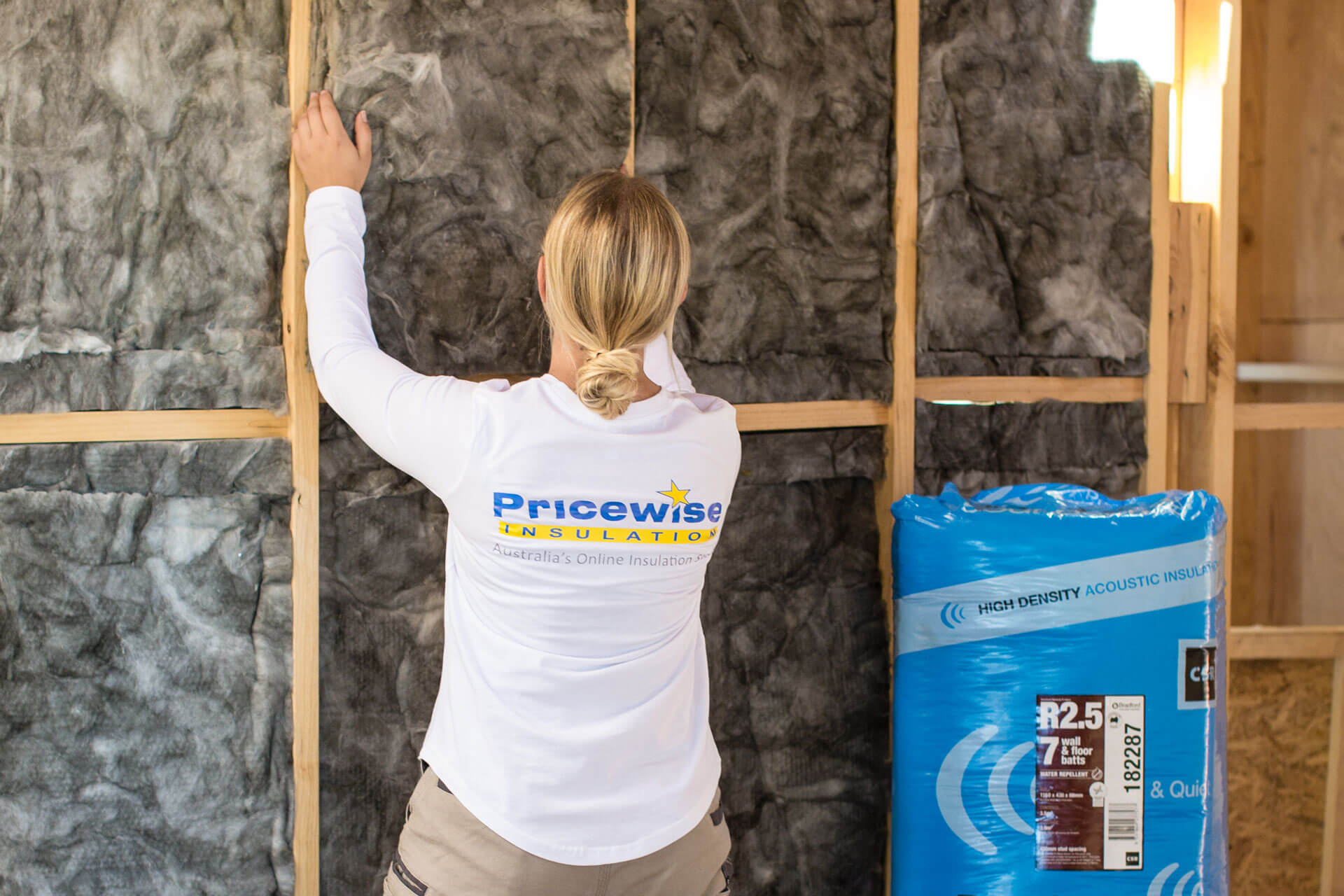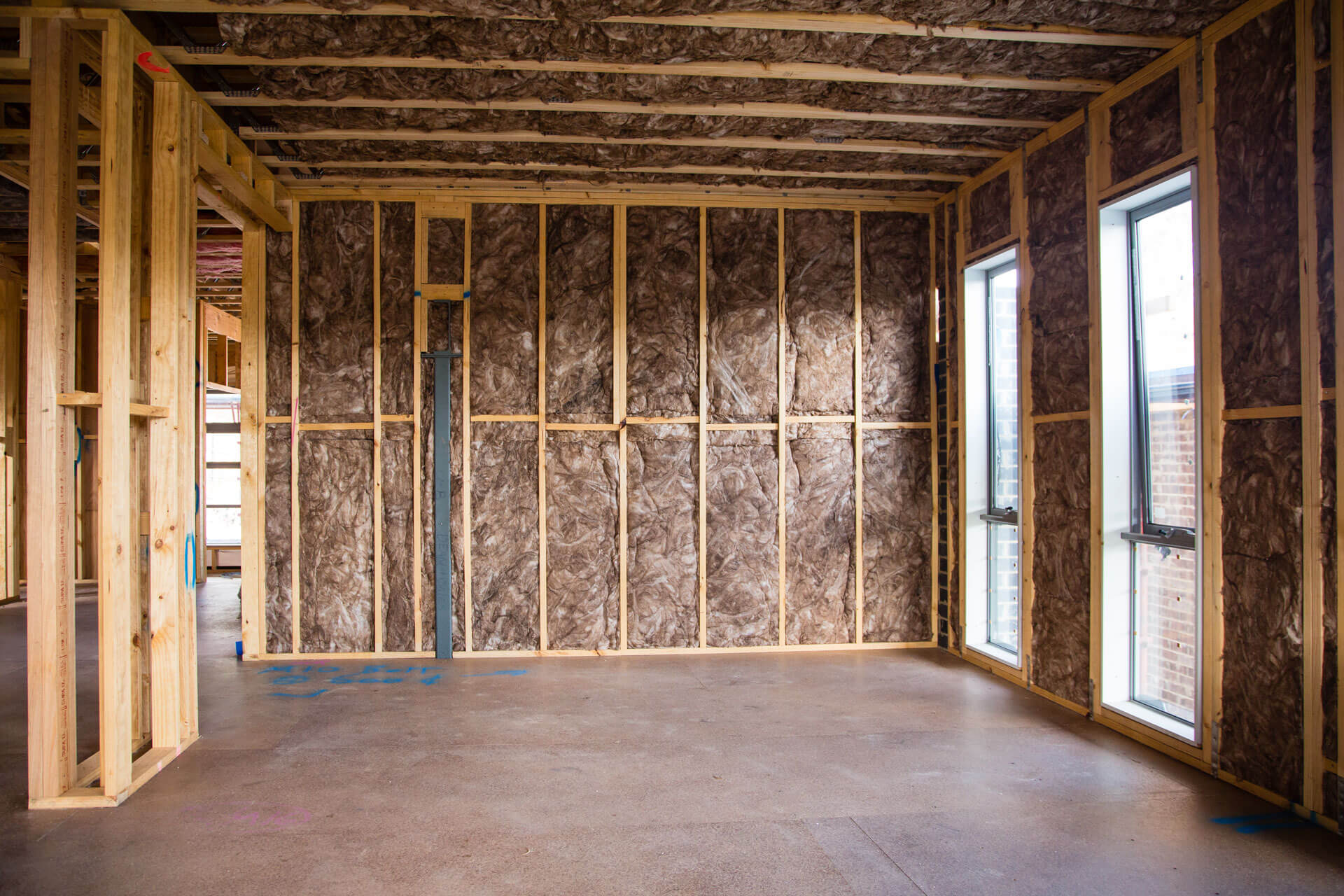Internal Wall Insulation
We recommend installing internal wall insulation for both thermal and acoustic benefits. Internal wall insulation batts can adsorb and reduce the transfer of unwanted sound between adjoining rooms. By insulating internal walls, heat is retained directly within rooms which allows you to create climate zones in your home.
Interior Wall Insulation – Thermal Benefits
Insulating the internal walls of your home reduces heat transfer between rooms and improves energy efficiency as heating or cooling is contained within a designated area of your home. This means that your energy usage decreases as the demand to constantly use heating or cooling unit is no longer required. This provides a more efficient solution for heating individual rooms and can be helpful for people who can only afford to heat the room they are occupying. This is good news for the home owner as energy bills decrease and savings increase. By insulating your home, you can save up to several hundreds of dollars in energy bills per annum.
Thermal insulation products for the interior walls available at Pricewise Insulation include;
• Knuaf Earthwool Thermal Wall Insulation Batts
• Fletcher Pink Batts Insulation
• Bradford Gold Batts (HP)
• Bradford Black
• Autex Greenstuf Thermal Batts
Interior Wall Insulation – Acoustic Benefits
Internal wall insulation is available in a range of densities for metal and timber frame construction, providing options for your individual requirements. Not insulating your internal walls means that your home can be expensive to heat and cool and can waste a lot of energy. The best time to insulate your internal walls is during a new construction or renovation project.
Installing internal wall insulation such as SoundScreen Insulation can reduce noise levels by up to 75% and ensure a comfortable noise level is maintained within your home. Installing acoustic insulation means less disturbances and a quieter home in which noise is maintained at an acceptable level. It is recommended that acoustic insulation is installed in the bedrooms of your home, for the privacy of all family members and to ensure everyone gets the quiet undisturbed sleep they deserve.
The following acoustic insulation products are available at Pricewise Insulation.
• Bradford SoundScreen
• Bradford Polymax Acoustic
• Knauf Earthwool Acoustic Wall Insulation Batts
• Pink Soundbreak Acoustic
• Greenstuf Sound Solution

